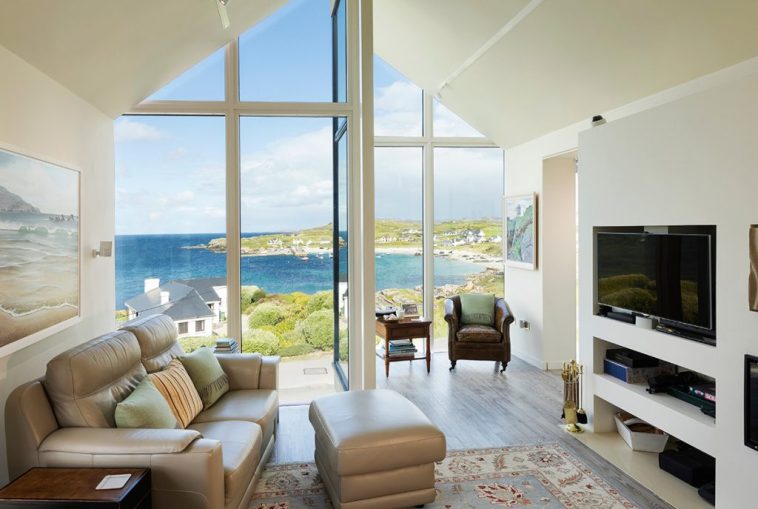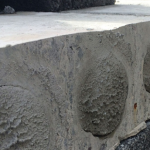How much will your windows and doors cost and how to budget for them.
In this article we cover:
- What makes windows and doors so expensive
- How much to budget for them in your build
- Impact of choice of framing material
- Impact of window size and design
- How doors have evolved over the years
- How much more does triple glazing cost
- Cost surveys
Budgeting for windows and doors can be challenging. The cost of windows can fluctuate based on factors like the profile, locks, fittings, size and design. If your estimate isn’t based on a real quotation, it’s likely that your budget will come under strain.
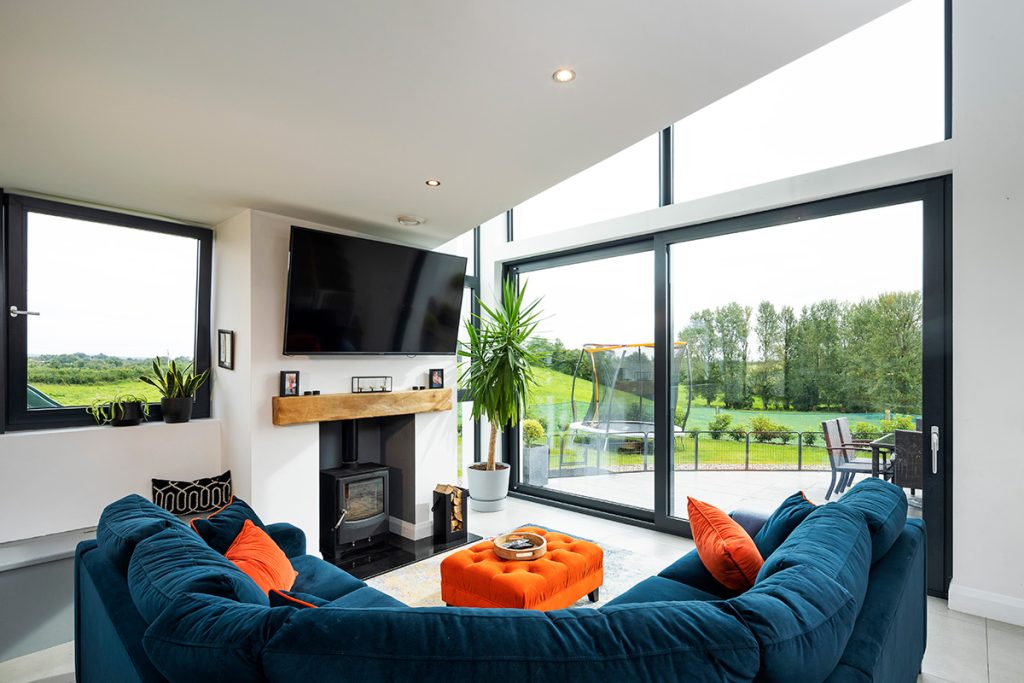
Choice of framing material
A lot of the cost will depend on the type of material you choose for the frame. There are three main options:
- uPVC casement frames are a popular and budget friendly choice for UK homeowners. The material provides excellent thermal insulation, is durable and long lasting. Usually, it is more economical compared to other materials, with prices generally ranging from £160 to £1,240 per frame.
- Aluminium is a lightweight metal known for its excellent malleability and strength, making it an ideal choice for window systems. Resistant to rust and warping, one of the biggest advantages of aluminium window frames is their 45-year lifespan. The material of choice for large scale window systems including shopfronts and curtain walling, aluminium offers the ability to achieve architecturally clean lines and large unobstructed glazed sections. Aluminium will generally cost from £210 to £1,615
- Timber window and door products, are often preferred for their traditional look, but they tend to the most expensive, with prices ranging from £240 to £1,860 per window. It’s important to consider the ongoing maintenance cost of timber windows. Factor this into the overall selection and costing process.
It’s important to factor in the frame orientation, whether they open inward or outward. In the UK, outward-opening units are the norm, while inward-opening options are preferred in Europe. Tilt and turn windows are particularly useful, allowing for top ventilation without needing to fully open the window, making them easier to clean as well.
[adrotate banner="58"]Also, the choice of ironmongery — such as handles and childproof mechanisms — shouldn’t be overlooked. All these aspects can influence the total cost of the units, unless you opt for standard options provided by the manufacturer.
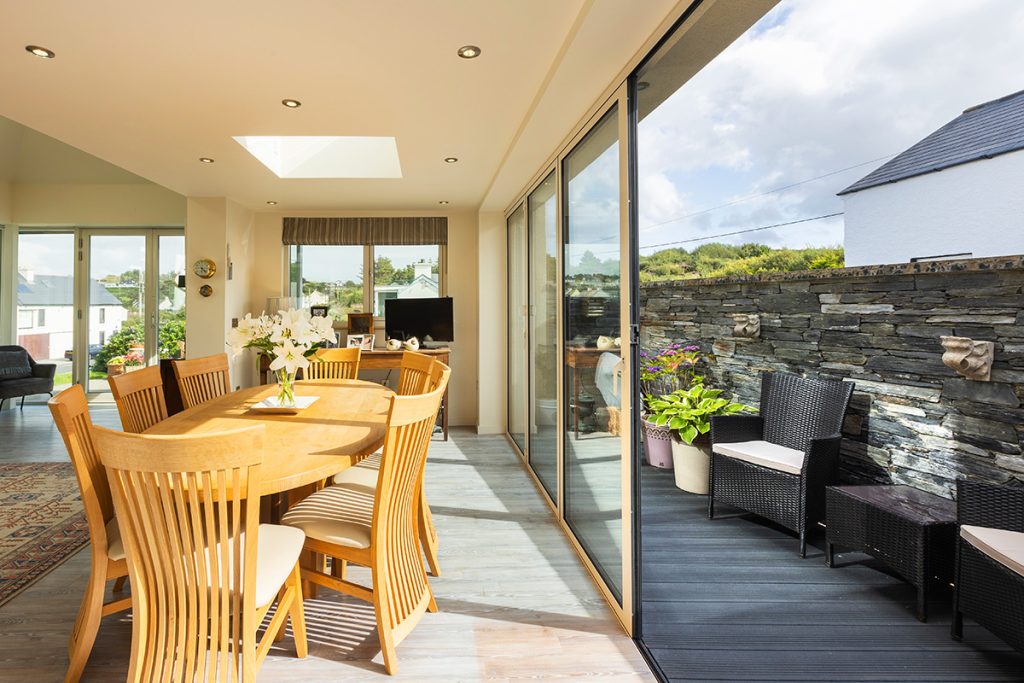
Size and design
The choice of frame material often depends heavily on the size of the design. Traditionally, windows and doors were typically manufactured to a standard maximum height of 2250mm, resulting in several rows of blockwork between the top of the unit and the underside of the ceiling in a standard 2400mm floor-to-ceiling space.
In recent years, with the increasing influence of architects on residential projects, many glazed units now reach the full floor-to-ceiling height of 2400mm or even exceed 2700mm. However, many manufacturers cannot produce units at these heights due to limitations in their manufacturing processes or the weight of the glass. Therefore, it’s common to see combinations of units such as a window panel situated above a door, to create the desired effect.
To avoid bulky frame profiles that can result from such combinations, architects and designers often prefer aluminium solutions. Aluminium can support single, uninterrupted glazed panels, making it ideal for larger glass installations.
The maximum width of glazed units can also pose challenges for materials like uPVC and timber. For example, sliding door systems and large glass panels are typically constrained in width with these materials, while aluminium offers more flexibility for creating wider spans..
Despite these advancements, window design and operation have remained largely unchanged over the years. Traditional styles such as sash, sliding sash and casement windows persist, with the notable exception of the introduction of the tilt-and-turn option.
Doors
Doors by comparison have evolved significantly over time. We’ve transitioned from traditional single door systems to various options such as door and screen combinations, French doors, sliding doors and even bi-fold and concertina arrangements. Each choice can greatly affect the overall cost — ranging from under a thousand for a single uPVC door to substantial five-figure amounts for bi-fold, concertina and large aluminum sliding doors.
It’s important to consider these potential costs during the early design phase; your budget must match your design vision.
We’ve highlighted the challenges of budgeting for your home build by looking at average costs per frame.
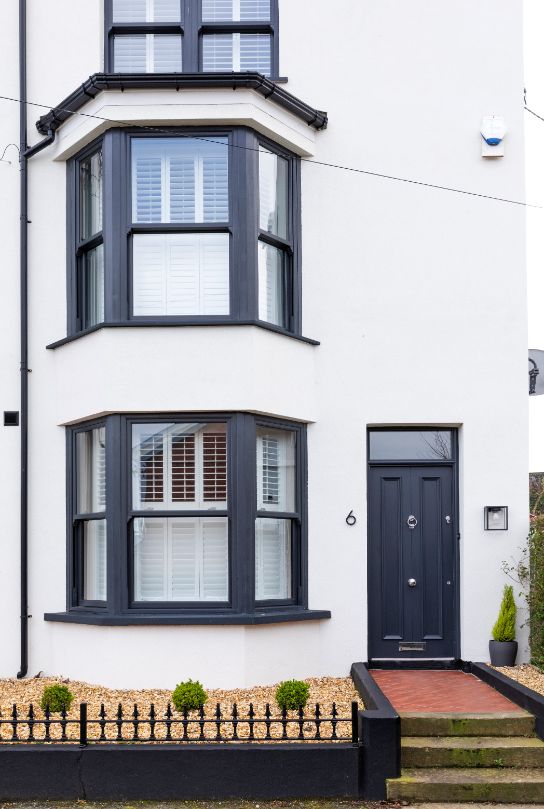
How much more does triple glazing cost?
Double-glazed glass units remain the most frequently specified option today, though triple glazing is rapidly gaining popularity. The cost difference between the two can vary significantly among manufacturers, with triple glazing potentially adding up to 20 percent to the overall glazing costs. It is increasingly common to see triple-glazed units specified for specific elevations, especially those facing north, while double glazing may be used for south-facing elevations. However, opting for the lower specification on the south side may compromise protection against overheating.
External links for windows and door costs (2025)
According to checkadrade.com 2025 window cost survey, the average cost of adding double glazing to a 3-bedroom house, based on roughly 8-12 windows, is around £8,000 to £15,000.
Greenmatch.com gave a breakdown of £560 to £720 for a standard uPVC front door, and £340 to £725 for a standard front door, with uPVC windows costing from £160 to £1,240 each.
According to the Federation of Master Builder’s (FMB) 2025 windows costings, uPVC double-glazed windows vary from £5,580 to £14,415 working out at around £372 to £961 per casement window.
Use our Windows and Doors Cost Calculator now.
The Selfbuild Window Cost Calculator will give you the estimated cost for windows right here. Enter in the materials, view estimate and start building today.

